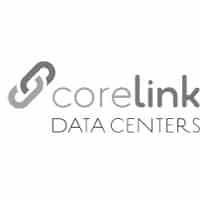Mission Critical Facility Power – Best Practices & Maintenance
When we talk about businesses or operations that depend on reliable power, there are few operations that are completely dependent on reliable power than mission-critical facilities. Mission-critical facilities must be designed to ensure that power is not only optimized but reliable with redundancies in place to ensure that there is never a significant loss of power. A power disruption of even a few seconds in a mission-critical facility could lead to significant lost revenue and, even worse, it could jeopardize the safety of employees, customers, and patients.
What is a Mission-Critical Facility?
 It is important to clarify what exactly a mission-critical facility is. After all, if the power is disrupted in a local insurance agent’s filing room, it is frustrating and could lead to some financial loss but it is not the end of the world. But, if power is disrupted for even a few moments in a data center, hospital, laboratories, military facilities, airports, emergency evacuation centers, fire and police stations, etc. – it could lead to dangerous situations, chaos, lost lives, financial losses, data breaches, etc.
It is important to clarify what exactly a mission-critical facility is. After all, if the power is disrupted in a local insurance agent’s filing room, it is frustrating and could lead to some financial loss but it is not the end of the world. But, if power is disrupted for even a few moments in a data center, hospital, laboratories, military facilities, airports, emergency evacuation centers, fire and police stations, etc. – it could lead to dangerous situations, chaos, lost lives, financial losses, data breaches, etc.
How Important is Reliable Power (Through Best Design Practices, Redundancy and Maintenance) in a Mission-Critical Facility?
 Reliable power is, as has been established, critical. So how can that really be achieved when there is a myriad of potential threats including natural disasters, power surges, digital attacks, and physical attacks? Architect Magazine explains that multi-layered approach that must be taken when it comes to reliable power in mission-critical facilities, “Protecting mission-critical institutions from remote attacks—as well as from acts of terrorism—is a paramount concern in our data-dependent society…’It’s one thing to have a great software security system that’s hard to hack into,’ says David Mecham, an associate at Denver’s Fentress Architects. ‘It’s another to provide redundancy to the mechanical and electrical systems.’Redundancy—virtual and physical—is a key tenet in protecting mission-critical buildings from cyber attacks. For example, backup electrical power sources and servers are a must in ensuring a system remains in operation, even if a portion of it fails or goes offline. “We give … that facility and those users time to react to the threat,” Luman says. “And we can give our IT professional something critical to his operation: a continuous power feed. It’s not only protection of physical systems, but we’ve got to bring to our facilities multiple sources of power generation: dual feeds to separate grids and stand-alone generator sets.” The dual electricity sources should be connected to separate substations.”
Reliable power is, as has been established, critical. So how can that really be achieved when there is a myriad of potential threats including natural disasters, power surges, digital attacks, and physical attacks? Architect Magazine explains that multi-layered approach that must be taken when it comes to reliable power in mission-critical facilities, “Protecting mission-critical institutions from remote attacks—as well as from acts of terrorism—is a paramount concern in our data-dependent society…’It’s one thing to have a great software security system that’s hard to hack into,’ says David Mecham, an associate at Denver’s Fentress Architects. ‘It’s another to provide redundancy to the mechanical and electrical systems.’Redundancy—virtual and physical—is a key tenet in protecting mission-critical buildings from cyber attacks. For example, backup electrical power sources and servers are a must in ensuring a system remains in operation, even if a portion of it fails or goes offline. “We give … that facility and those users time to react to the threat,” Luman says. “And we can give our IT professional something critical to his operation: a continuous power feed. It’s not only protection of physical systems, but we’ve got to bring to our facilities multiple sources of power generation: dual feeds to separate grids and stand-alone generator sets.” The dual electricity sources should be connected to separate substations.”
What are Mission-Critical UPS and PDU?

To be able to discuss supplying reliable power in a mission-critical facility, it is imperative that all terminology be understood. And, there are two terms that are particularly important to the discussion: UPS and PDU. UPS stands for Uninterruptible Power Supply and PDU stands for Power Distribution Unit. A UPS is essentially a backup power source that kicks-in the moment a power disruption is sensed with the primary power source. If all goes as planned, the UPS would instantly kick-in the moment a power disruption is sensed, which prevents downtime. There are different types of UPS systems and batteries depending on your unique power needs and preferences.
A PDU delivers power to mission-critical equipment in a mission-critical facility. Though they sound like they are the same as power strips, they are not. Eaton elaborates on the role of PDUs in mission-critical facilities, “Power distribution is facilitated through different pieces of equipment that take the power conditioned by your uninterruptible power supply (UPS) and send it to your IT equipment. Power distribution solutions can manage and even control energy consumption in smaller environments as well as large data center applications. Distributing power efficiently results in reduced operating costs and increased reliability…Whether you need integrated power distribution within a few racks or power throughout your data center, there are many solutions to consider when building out your power infrastructure. Understanding your environment and power needs allows you to begin right-sizing your distribution equipment.”
Why Maintenance Matters
Now that we understand the basic components of reliable power in mission-critical facilities and the importance of designing your power supply and redundancy to meet the unique needs of your facility now while being scalable for the future, we can look at the importance of maintenance. After all, you can design, install and deploy a great reliable power source with redundancy and proper power distribution in place, but if you do not maintain, it could all still fail when you need it the most.
 Mission-critical facility power supply maintenance should be a top priority of any manager or operator. A comprehensive maintenance plan must be established from the beginning, or as soon as possible, and completed routinely, to ensure backup power supply equipment will not fail when the time comes for them to be used. You could choose a really great UPS and battery but batteries naturally deteriorate over time or due to outside factors such as ambient conditions. Thus, if you do not routinely inspect and maintain your UPS battery, it may fail and when the UPS system is needed, it will not kick in because the battery is dead.
Mission-critical facility power supply maintenance should be a top priority of any manager or operator. A comprehensive maintenance plan must be established from the beginning, or as soon as possible, and completed routinely, to ensure backup power supply equipment will not fail when the time comes for them to be used. You could choose a really great UPS and battery but batteries naturally deteriorate over time or due to outside factors such as ambient conditions. Thus, if you do not routinely inspect and maintain your UPS battery, it may fail and when the UPS system is needed, it will not kick in because the battery is dead.
When it comes to maintenance of various sources of power in mission-critical facilities, APC is very specific about the importance of routine maintenance, “Generators provide backup power when electrical utilities fail. From a simple single generator and Automatic Transfer Switch (ATS) to a complex multi-generator plant, the care and maintenance of your generator is crucial to the survival of your facility. Starting an emergency generator with no load during a weekly test provides reassurance that the generator is operation…Periodic maintenance is key to avoiding major problems caused by minor oversights…Automatic transfer switches (ATS) are used to automatically provide emergency power during the loss of utility power. An ATS senses when utility power fails, starts the generator, and brings it online. When utility power is restored, most transfer switches wait a prudent amount of time and automatically switch back. These transfer switches contain parts and connections that can and will fail, therefore ongoing maintenance is critical…Uninterruptible power supplies (UPS) are essential equipment at mission-critical facilities. From a small UPS plugged into an outlet at a personal computer, to large parallel systems that power large computer centers, UPSs all have one thing in common – batteries. UPS batteries have a finite life span and must be tested regularly…The battery is the heart of the UPS system, and battery monitors help extend the life of batteries while increasing the reliability of the battery plant. Don’t overlook maintenance of other batteries in your facility. From generator-starting batteries, Program Logic Controllers (PLCs), monitoring and control systems, to breakers and trip units, a $2.00 watch battery may prevent your generator from coming online. Even UPS systems are not immune to failure. Consider designing in the appropriate redundancy to ensure that your critical load remains operational in case of a UPS failure. Once again, a proactive maintenance program is essential to minimizing the risk of a failure.”
Optimizing Your Mission-Critical Facility Power Starts at Design But Ends with Maintenance
Designing your mission-critical facility’s power infrastructure is just the beginning of optimizing your power supply. Your power supply must not only be efficient and effective for your current power needs but scalable to future needs as well. Your power supply must not only be reliable at installation but when it is needed most – when a power disruption occurs. Your power supply can only achieve that through routine in-depth inspection and proper maintenance. There is a lot to keep track of so that no area of maintenance gets neglected which is why it is considered best-practices for a mission-critical facility to have a comprehensive maintenance plan in place that is conducted on a regular basis. By making a plan you can have checklists and assigned tasks that ensure accountability and consistency. You will be able to clearly see what has and has not been maintained by your maintenance records. Through thorough inspection and routine maintenance, your mission-critical facility will be able to utilize your well-designed power and maximize uptime.




























